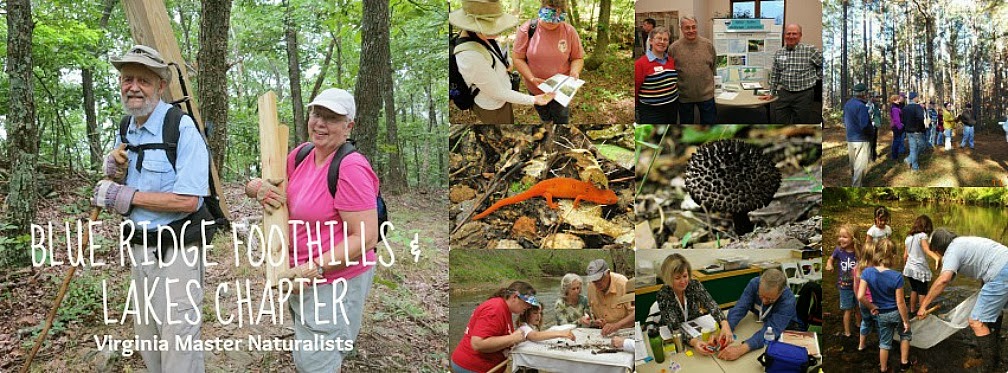In mid-March several members of the local Blue Ridge Foothills And Lakes (BRFAL) Chapter of the Virginia Master Naturalists (VMN) and their guests traveled to Martinsville for a behind the scenes tour of the Virginia Museum of Natural History.
L-R: Dick LeRoy (BRFAL Pres), Charlotte Hubbard, Doug Horne, Becky Cooper, Meg Brager, Guy Buford, Dick Hendrix, Rich Brager, Lee Borgman, Jeanne Borgman, Carl Boast, Linda Boast, Kathy Scott outside the Virginia Museum of Natural History in Martinsville. Not pictured, Jason Scott.
Dr. Denny Casey, Director of Education and Public Programs treated them to views of the museum not usually seen by the public. This included the Vertebrate Paleontology lab where specimens dated to 500 million years ago and uncovered by recent mining operations are carefully extracted, examined and cataloged.
In the collections area the group saw storage areas for insects, mammals, geological specimens and invertebrates.
Dr. Denny Casey (L) of VMNH shares behind the scenes info on Geology with BRFAL members Lee Borgman (top), Dick Hendrix and others.
The building, which opened at its current location in 2007, is carefully climate controlled and the group got to see the complex machinery related to that on their way to the roof of the building to see the Weatherbug station maintained at the museum. The final stop on the tour was at the zooarcheology lab where human remains in conjunction with animal remains are studied.
The group then joined forces with the Southwestern Piedmont Chapter of VMN, which serves the cities of Martinsville and Danville, and the counties of Henry, Patrick and Pittsylvania, for a continuing education program on Invasive Insects in Virginia. The program was given by Jessica Driver a member of the Southwestern Piedmont Chapter.
Master Naturalists from the BRFAL & Southwestern Piedmont Chapters attend training on Invasive Insects in VA at the Virginia Museum of Natural History.
The class covered up to date information on some familiar invasive insects such as Japanese Beetles, brown marmorated stink bugs, Asian lady bugs and gypsy moths. They also learned more about recent invasions by the emerald ash borer, Chinese praying mantis, European earthworms, Kudzu stink bugs and fire ants. They were alerted to several potential new threats including the Asian Longhorn Beetle, Walnut twig beetle, European Grapevine moth, light brown applemoth, oak ambrosia beetle and the green oak tortrix.
Several of the latter bugs are not yet in the USA, but carelessness in transporting luggage, plants, automobiles, outdoor clothing and furniture and agricultural materials could result in their introduction. Once present, invasive insects can be difficult to get rid of and can be costly to agriculture as well as other endeavors.
Several projects were brought to the attention of the Master Naturalists at the training course. Volunteer projects are the central focus of the program. These projects included finding and reporting ladybugs, doing tree checks for Thousand Cankers Disease (a fungus transported by the Walnut twig beetle), a phone app for reporting stink bug activity and an ash seed collection team.
For more information about BRFAL contact BRFAL.VMN@gmail.com or facebook.com/BRFAL




No comments:
Post a Comment
Thanks for your comment and interest! NOW GO OUTSIDE!